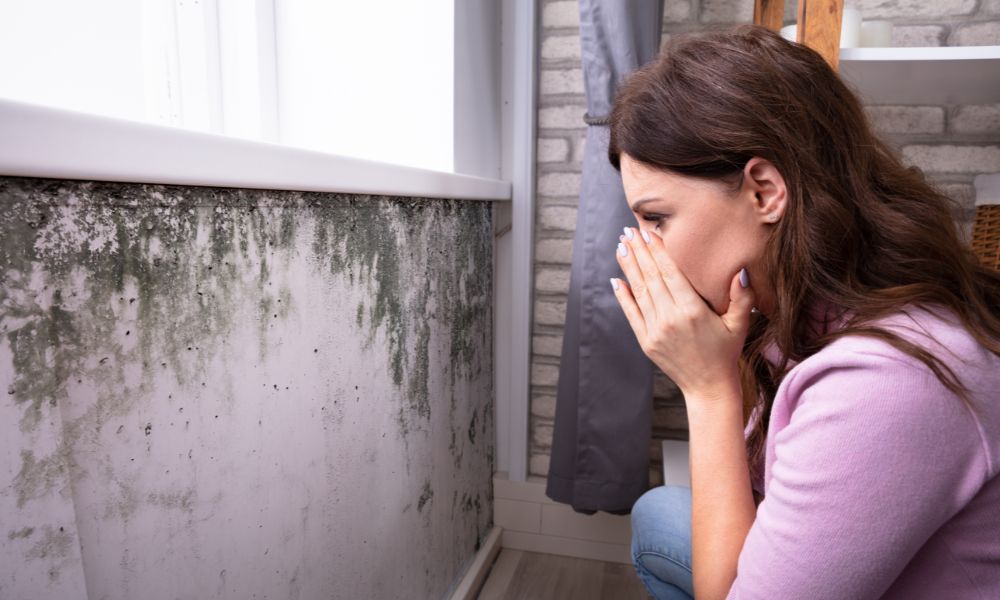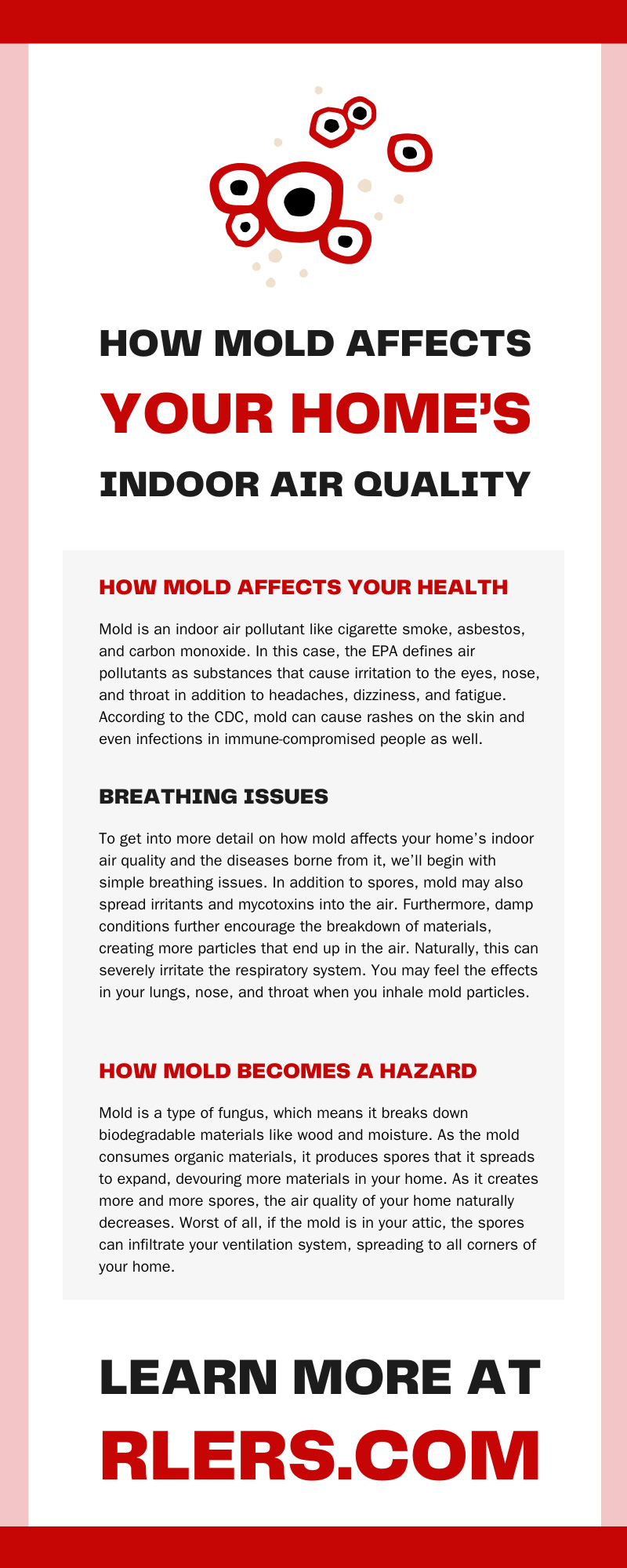
It’s common knowledge that mold is bad for the condition of your home, as it’s unsightly and can give off an unpleasant smell. However, are you also aware of the hazard that it can present to your health? While a small growth won’t seem like a big deal, mold can quickly grow and spread until it’s out of control. To show you why you should call a certified mold remediation company immediately, allow us to teach you how mold affects indoor air quality here.
How Mold Affects Your Health
Mold is an indoor air pollutant like cigarette smoke, asbestos, and carbon monoxide. In this case, the EPA defines air pollutants as substances that cause irritation to the eyes, nose, and throat in addition to headaches, dizziness, and fatigue. According to the CDC, mold can cause rashes on the skin and even infections in immune-compromised people as well.
This, of course, assumes one doesn’t have allergies to mold spores. The signs of an air pollutant like mold spores will become much more apparent for such individuals and vary from minor symptoms to serious reactions, depending on a person’s allergies.
Aside from looking for the more immediate reaction of allergies, it’s unfortunately unclear how to best anticipate the damages of air pollutants. You could be exposed to mold for one day or weeks before showing symptoms, and the type of mold you encounter can also play a role in what symptoms you experience and how quickly. For this reason, if you discover mold in your home, you need to react as quickly as possible and get rid of it to be safe rather than sorry.
Breathing Issues
To get into more detail on how mold affects your home’s indoor air quality and the diseases borne from it, we’ll begin with simple breathing issues. In addition to spores, mold may also spread irritants and mycotoxins into the air. Furthermore, damp conditions further encourage the breakdown of materials, creating more particles that end up in the air.
Naturally, this can severely irritate the respiratory system. You may feel the effects in your lungs, nose, and throat when you inhale mold particles.
Allergies
Returning to the topic of allergies, mold spores can trigger general allergies and mold-specific allergies. Mold allergies have overlap with hay fever or seasonal allergies, featuring symptoms such as the following:
- Blocked or runny nose
- Sneezing
- Watery eyes
- Itchy nose and throat
If you observe these symptoms, it’s worth inspecting your home for mold before your allergies get worse. You want to avoid asthma attacks.
Aspergillosis
Not all mold is the same. Some types cause specific and more dire diseases. For example, Aspergillus is dangerous because it causes a unique but serious disease appropriately called “aspergillosis.” Aspergillus doesn’t affect many people, but those with a weakened immune system or an existing lung disease are vulnerable.
To further complicate the issue, there are different types of aspergilloses:
- Allergic bronchopulmonary aspergillosis (ABPA): This targets the lungs and makes it difficult for a person to breathe.
- Allergic Aspergillus sinusitis: This affects the nose and causes headaches.
- Aspergilloma (fungus ball): This can cause a nasty cough that may produce blood and damage that creates breathing issues.
- Chronic pulmonary aspergillosis: This causes breathing problems, coughs, and even weight loss.
Because everyone is unique in how easily mold may affect their health, the severity of these conditions can vary depending on the person. Regardless, you should seek medical attention right away if you exhibit symptoms of aspergillosis.
Other Symptoms
On top of everything, mold and the conditions it grows in can encourage the production of microbes and bacteria, which can also trigger an inflammatory response in some people. As a result, the World Health Organization has noted that mold and the microbial agents it produces can increase the risk of bronchial and fungal infections.
Apart from breathing issues, some other notable symptoms that indicate the presence of mold include:
- Skin and eye irritation
- Fever
- Excessive fatigue
- Nausea
- Insomnia
- Mucous membrane irritation
- Headaches
Some of these symptoms seem more generic. However, it may still be worth inspecting your home, especially if you’re experiencing these issues.
How Mold Becomes a Hazard
Mold is a type of fungus, which means it breaks down biodegradable materials like wood and moisture. As the mold consumes organic materials, it produces spores that it spreads to expand, devouring more materials in your home. As it creates more and more spores, the air quality of your home naturally decreases. Worst of all, if the mold is in your attic, the spores can infiltrate your ventilation system, spreading to all corners of your home.
How To Handle Mold in the Home
If you find that your home is having issues with mold, you should always contact a professional remediation company to give your home a thorough cleansing. However, there are steps you can take to reduce mold growth, if not prevent it from taking root in the first place. In particular, mold thrives in locations that are damp and humid, so your first step should be to remove the humidity to prevent the growth of more mold. To reduce humidity, you want to focus on ventilation. For example, you should use a dehumidifier to reduce moisture in the air and open windows to help the air circulate through your home. You’ll also want to ensure you don’t leave damp fabrics lying around the house, as they’re ideal places for mold to grow. You should open and air out closets and drawers that you haven’t used in a long time as well.
If you need a more direct solution until you have professional mold removal services arrive, you can use readily available mold-removal products. However, even spraying the mold with vinegar is an effective method of containing its spread. Vinegar alone can kill the majority of mold species and will help you keep them at bay. From there, you can have a mold remediation service come in and completely rid you home of all traces of the mold.


